Beach photography is a popular genre that captures the beauty, serenity, and fun of the seaside. The beach provides a stunning backdrop for photography with its crystal-clear waters, golden sand, and striking natural features.
It’s unsurprising that beach photography has become a favorite among photographers of all levels, from amateurs to professionals.
In this post, we will explore some beach photography ideas and techniques to help you capture stunning photos that will make your viewers feel like they are at the beach. Whether you’re looking to capture the beauty of the sunset, the excitement of water sports, or the joy of beachgoers, this post will provide you with inspiration and tips to enhance your beach photography skills.
Table of content I- Equipment and Settings for Beach Photography
-
-
-
The required gear -
Camera settings -
Tips for protecting your gear from sand, saltwater, and sun damage
-
-
II- Creative Beach Photography Ideas III- Portrait Beach Photography
-
-
-
Action Beach Photography -
Post-Processing
-
-
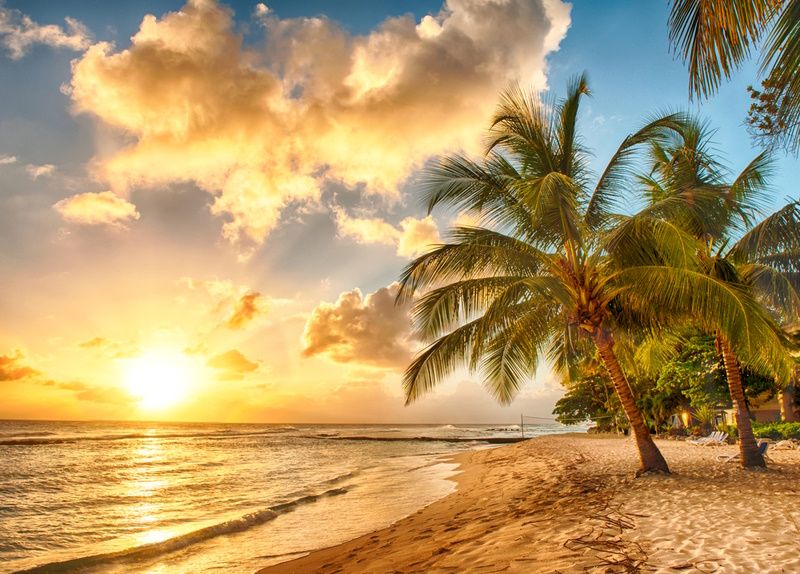
Photo by Depositphotos
I- Equipment and Settings for Beach Photography
THE REQUIRED GEAR
When it comes to beach photography, having the right equipment is essential to capture stunning shots. Here are some of the most important pieces of equipment you will need:
-
Camera:
When choosing a camera for beach photography, consider the type of photography you want to do and your skill level. A high-end DSLR camera can provide excellent image quality, versatility, and control over the settings, but it can also be bulky and heavy to carry around. A mirrorless camera is a lighter and more compact option, and many models offer comparable image quality to DSLRs.
Some compact cameras are also suitable for beach photography, especially if you’re looking for a portable and easy-to-use option.
When it comes to sensor type, larger sensors generally provide better image quality, low-light performance, and dynamic range. Full-frame sensors are the largest and most expensive, but they offer the best image quality.
APS-C sensors are smaller, but they can still produce high-quality images and are more affordable. Micro Four Thirds sensors are even smaller, but they are lightweight and compact, making them a popular choice for travel and outdoor photography.
-
Lens:
A wide-angle lens is a popular choice for beach photography, as it allows you to capture the vastness and beauty of the beach and ocean.
A 16-35mm or 18-55mm lens is a good starting point, but you can also go wider if you want to capture more of the surroundings. A telephoto lens, such as a 70-200mm or 100-400mm, can be useful for capturing action shots.
It’s also important to consider the aperture of the lens, which affects the depth of field and the amount of light that enters the camera. A wide aperture, such as f/1.8 or f/2.8, can create a shallow depth of field and blur the background, while a narrower aperture, such as f/8 or f/11, can produce a sharper and more detailed image.
-
Tripod:
A tripod is essential for keeping your camera stable and steady, especially if you’re shooting during low light conditions or long exposures. Look for a tripod that is lightweight and portable, so you can easily carry it with you on the beach.
A carbon fiber tripod is a popular choice for beach photography, as it’s lightweight, durable, and resistant to corrosion. A tripod with adjustable legs and a ball head can also provide greater flexibility and versatility.
-
Filters:
Filters can be used to enhance your photos and create unique effects. A polarizing filter is a must-have for beach photography, as it can help reduce glare and reflections on water and sand, and increase contrast and color saturation.
A neutral density filter can be used to slow down your shutter speed and create motion blur, which is useful for capturing the movement of waves or clouds.
Graduated filters can also be useful for balancing the exposure of the sky and the foreground, especially during sunrise or sunset.
-
Protective gear:
To protect your camera and lenses from sand and saltwater, consider using a protective cover or bag. A camera rain cover or sleeve can be useful for protecting your camera from rain, sand, and wind, while a waterproof camera case can keep your camera safe from water and moisture.
You can also use a lens hood to protect your lens from sand and direct sunlight. After shooting at the beach, be sure to clean your equipment thoroughly with a soft brush and a microfiber cloth to remove any sand or salt residue.
CAMERA SETTINGS
The ideal camera settings for beach photography can vary depending on the lighting conditions, the time of day, and the type of photos you want to capture. Here are some general guidelines to help you get started:
- ISO – Set your ISO as low as possible to reduce noise and maintain image quality. A range of ISO 100-400 is usually suitable for shooting in daylight or bright conditions. If you’re shooting during low light conditions or want to capture long exposures, you may need to increase your ISO to 800 or higher.
- Aperture – Use a narrow aperture, such as f/8 or f/11, to ensure that both the foreground and the background are in focus. A narrow aperture also allows you to use slower shutter speeds without overexposing the image.
- Shutter speed – Use a fast shutter speed to freeze action, such as 1/1000s or higher for capturing waves or birds in flight. For long exposures, such as when capturing the movement of water, use a slower shutter speed, such as 1/30s or lower.
- White balance – Set your white balance to match the lighting conditions, whether it’s daylight, shade, or cloudy. If you’re shooting during sunrise or sunset, you may want to use a warmer white balance setting to capture the golden or blue hour light.
- Focus – Use manual focus or autofocus to ensure that your subject is in focus. If you’re shooting landscapes, you may want to use hyperfocal distance to ensure that everything from the foreground to the background is in focus.
- Shooting mode – Use manual mode or aperture priority mode to have greater control over the settings and the exposure. If you’re shooting action or movement, you may want to use shutter priority mode to set the shutter speed and let the camera adjust the aperture and ISO.
- RAW format – Shoot in RAW format if possible, as it allows you to capture more details and have greater flexibility during post-processing. RAW files also have a wider dynamic range and can recover more details from overexposed or underexposed areas.
Keep in mind that these settings are just a starting point, and you may need to adjust them based on the specific conditions and your creative vision. Don’t be afraid to experiment with different settings and techniques to capture unique and stunning beach photos.
TIPS FOR PROTECTING YOUR GEAR
Protecting your equipment from sand, saltwater, and sun damage is essential when shooting at the beach. Here are some tips to help keep your gear safe:
- Use a protective bag or cover – Cover your camera and lenses with a protective bag or cover to prevent sand and saltwater from getting inside. You can use a rain cover, a plastic bag, or a specialized camera bag with a waterproof lining.
- Bring a lens hood – A lens hood can protect your lens from direct sunlight and reduce the risk of lens flare or ghosting. It can also help to prevent sand and water from splashing onto the lens.
- Keep your gear dry – Avoid getting your camera and lenses wet, as salt water can cause corrosion and damage to the electronics. Wipe your gear dry with a clean cloth or towel, and avoid exposing it to direct sunlight for prolonged periods.
- Clean your gear regularly – Sand and saltwater can damage your gear if left untreated. After each shoot, clean your gear with a soft brush or cloth and remove any sand or debris. You can also use a blower or compressed air to remove any dust or sand particles.
- Store your gear properly – When you’re not using your camera, store it in a cool, dry place away from direct sunlight. Avoid leaving your gear in a hot car or in humid conditions, as this can cause condensation and damage your equipment.
By following these tips, you can help to protect your gear from damage and ensure that it lasts for many beach photography sessions to come.
II- Creative Beach Photography Ideas
The beach is one of the most photogenic locations in the world, with its vast expanses of sand, shimmering blue waters, and stunning sunsets. For photographers looking to capture the beauty of the beach, there are countless creative photography ideas to explore. In this section, we will explore some of the most exciting and unique beach photography ideas that will help you create breathtaking images.
-
Long Exposure Photography:
Long-exposure photography is an excellent way to capture the beauty and movement of ocean waves. By using a slow shutter speed, you can create a stunning effect that shows the motion of the waves as they crash onto the shore. To get the best results, you will need a tripod, a neutral density filter, and a remote shutter release.
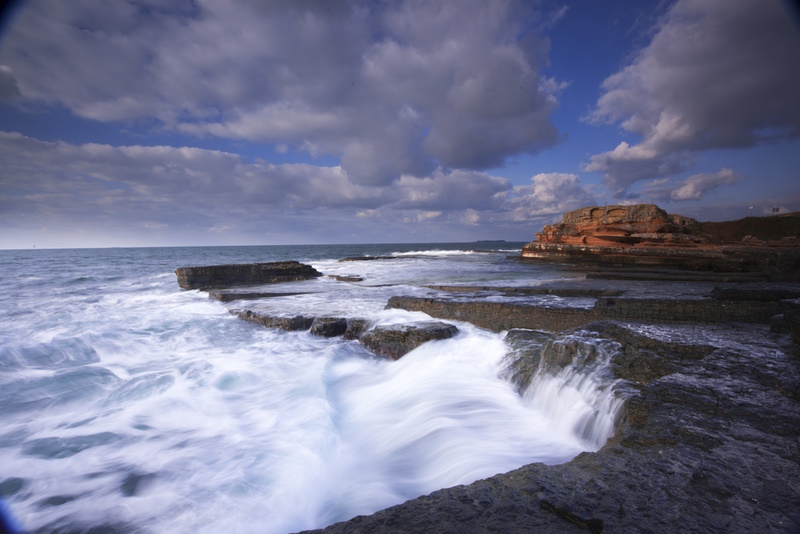
Photo by Depositphotos
-
Silhouette Photography:
Silhouette photography is a great way to capture the beauty of the beach during sunset or sunrise. By positioning your subject in front of the sun, you can create a stunning silhouette that showcases the beauty of the beach and the natural surroundings.
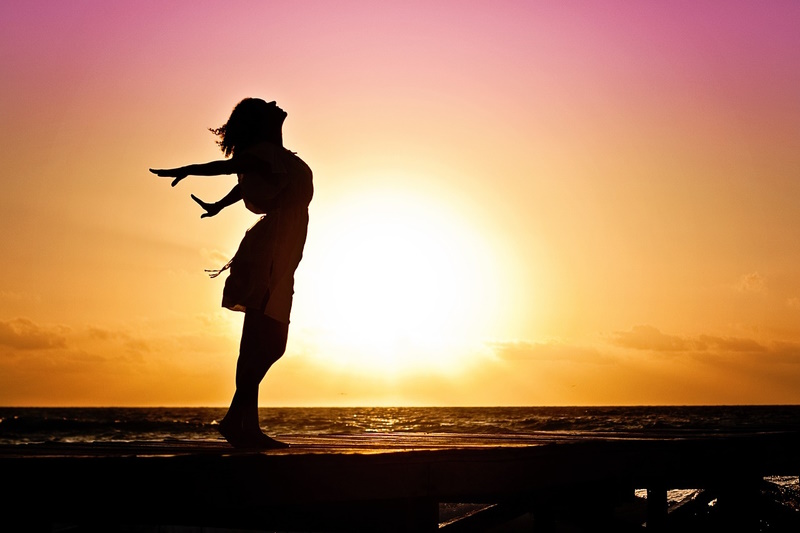
Image by Jill Wellington from Pixabay
-
Reflection Photography:
Reflection photography is an excellent way to capture the beauty of the beach in a unique and creative way. By shooting from a low angle, you can capture the reflections of the clouds, the sun, and the surrounding landscape in the water, creating a stunning and surreal effect.
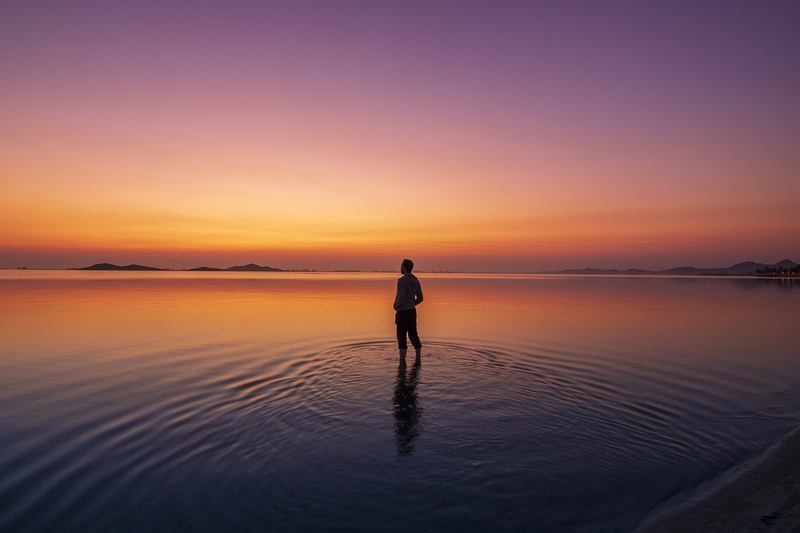
Image by Antonio López from Pixabay
-
Drone Photography:
Drone photography is a relatively new and exciting way to capture the beauty of the beach from a unique perspective. By flying a drone over the beach, you can capture stunning aerial shots that showcase the vastness and beauty of the ocean and the surrounding landscape.

Image by Terry Simmonds from Pixabay
-
Macro Photography:
Macro photography is an excellent way to capture the intricate details of the beach and its surroundings. By using a macro lens, you can capture the tiny grains of sand, the textures of seashells, and the intricate patterns of seaweed and other beach flora.
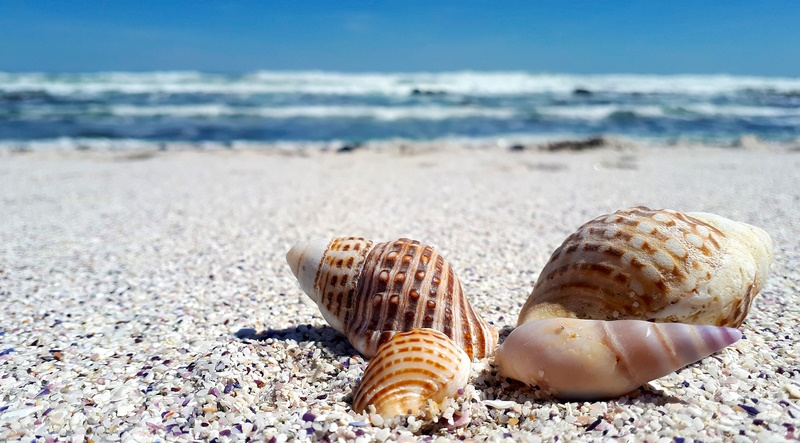
Image by Liselle VD from Pixabay
-
Candid Photography:
Candid photography is an excellent way to capture the natural beauty and joy of the beach. By photographing people enjoying themselves on the beach, you can capture genuine and authentic moments that showcase the beauty and magic of the beach experience.
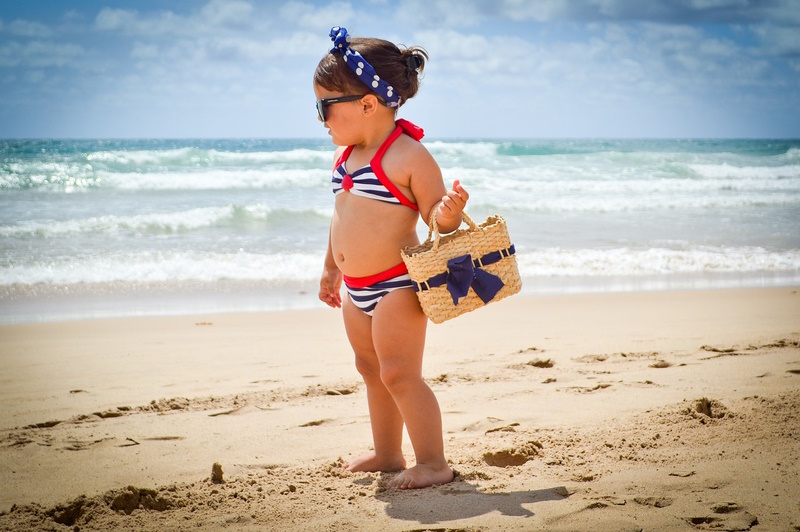
Image by cynthia_groth from Pixabay
-
Underwater Photography:
Underwater photography is a great way to capture the beauty of the ocean from a unique perspective. By using an underwater housing for your camera or a waterproof camera, you can capture stunning images of sea life, waves, and patterns underwater.
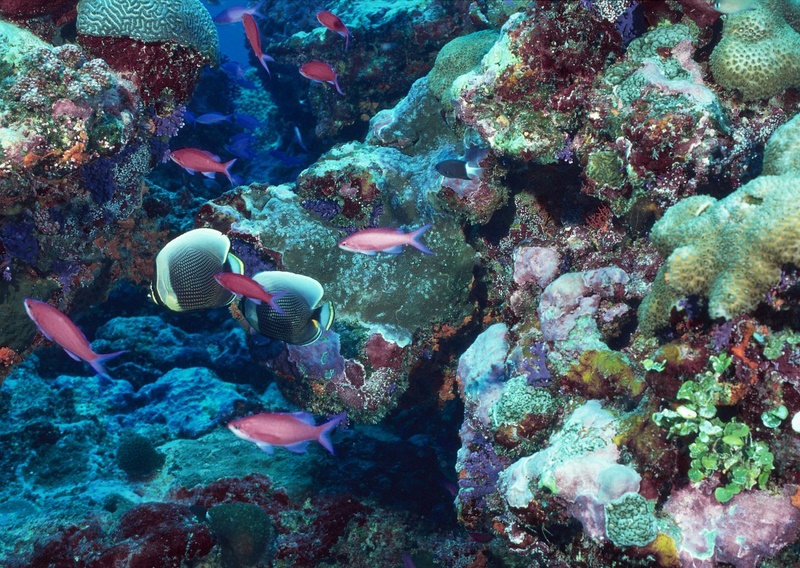
-
Minimalist Photography:
Minimalist photography is all about capturing simple and clean compositions that focus on a single subject or element. The beach is a great location for minimalist photography, as you can capture images of a lone person walking on the beach, a single seashell, or a boat on the horizon.

Photo by Chris F
-
Panorama Photography:
Panorama photography is a technique where you capture a wide and expansive view of a scene by stitching together multiple images. The beach is a great location for panorama photography, as you can capture the vastness of the ocean, the coastline, and the surrounding landscape.
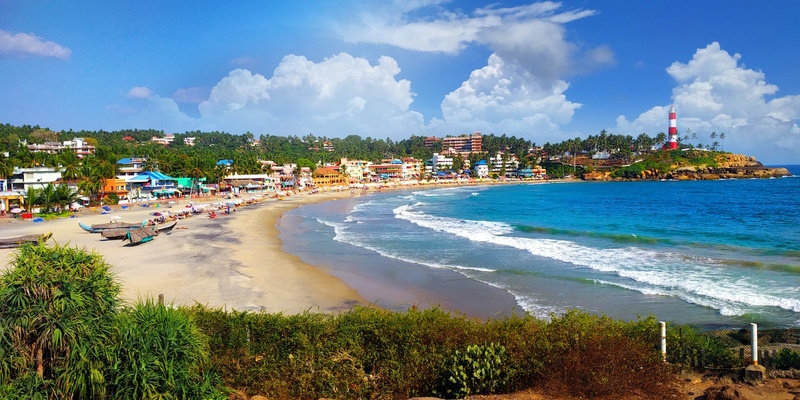
Photo by George Martin
-
Night Photography:
Night photography is a great way to capture the beauty of the beach after dark. By using a tripod and a long exposure, you can capture stunning images of the stars, the moon, and the beach illuminated by artificial light.
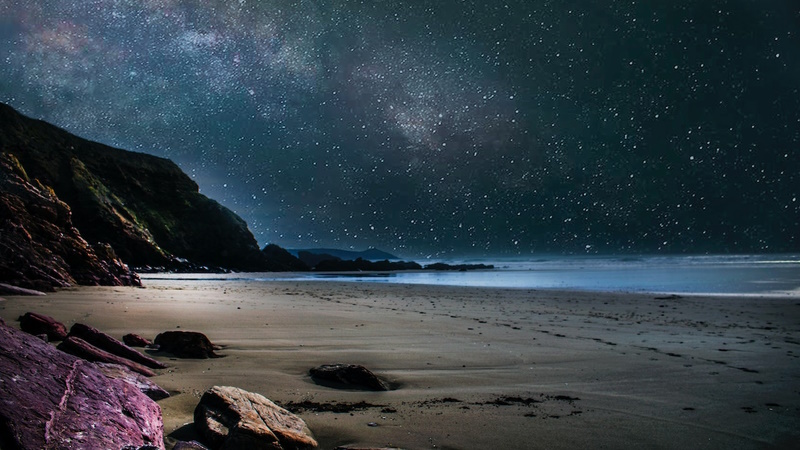
Photo by Dominika Roseclay
-
HDR Photography:
HDR photography is a technique where you capture multiple exposures of the same scene and combine them to create an image with a high dynamic range. This technique is perfect for capturing the contrast between the bright sky and the darker beach landscape.
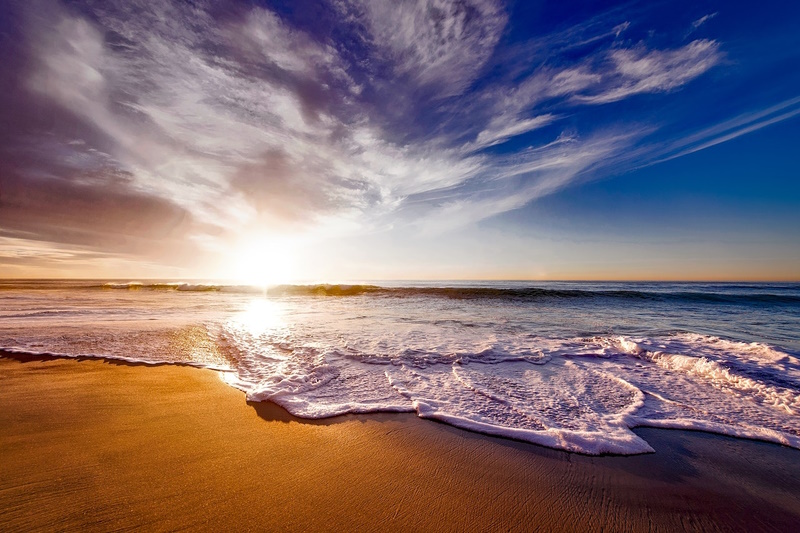
Photo by Pixabay
In conclusion, the beach is a magnificent location for photographers to explore their creativity and capture the beauty of nature. Whether you choose to experiment with long exposure photography, black and white photography, silhouette photography, reflection photography, drone photography, macro photography, or candid photography, there are countless creative beach photography ideas to explore.
With the right equipment, technique, and imagination, you can create stunning and unforgettable images that showcase the unique beauty of the beach.
III. Portrait Beach Photography
Beach portrait photography is a popular genre of photography that offers unique opportunities for capturing beautiful and memorable images. In this section, we will discuss some tips and techniques for capturing beautiful beach portraits, including posing, lighting, and composition.
We will also offer suggestions for incorporating the beach environment into portrait photography, such as using the ocean or sand dunes as a backdrop.

Photo by Иван Мельник
-
Posing:
Posing is an essential element of portrait photography, and it is especially important when photographing on the beach. When posing your subject, consider the environment around them and use it to your advantage. For example, you can have your subject lean against a rock or sit on a piece of driftwood. You can also have them walk along the shoreline or jump in the waves. Keep in mind that beach portraits tend to have a more relaxed and casual vibe, so you can experiment with more natural and fluid poses.

Photo by Kindel Media
-
Lighting:
Lighting is another crucial element of portrait photography, and it can be challenging to get right on the beach. The bright sunlight can create harsh shadows and cause your subject to squint. One way to overcome this is to shoot during the golden hour, which is the hour after sunrise or before sunset when the light is softer and more flattering. You can also use a reflector or a diffuser to control the light and reduce the shadows on your subject’s face.
-
Composition:
Composition is the way you arrange the elements in your image, and it plays a significant role in creating a visually appealing portrait. When composing your beach portraits, consider the rule of thirds, which involves dividing your image into thirds both horizontally and vertically and placing your subject at the intersection of the lines.
You can also experiment with different angles and perspectives, such as shooting from a low angle to capture the ocean in the background or shooting from a high angle to show the vastness of the beach.

Image by adamkontor from Pixabay
-
Incorporating the Beach Environment:
The beach environment offers unique opportunities for incorporating natural elements into your portraits. You can use the ocean or the sand dunes as a backdrop, or you can incorporate beach props such as umbrellas, surfboards, or beach towels. Keep in mind that these elements should complement your subject rather than overpower them.

Photo by Depositphotos
-
Choosing the Right Outfit:
The outfit your subject wears can significantly impact the overall look and feel of your beach portraits. For a more relaxed and casual look, consider choosing outfits that are flowy, lightweight, and have a beachy vibe, such as sundresses, shorts, and sandals.
Keep in mind that light-colored fabrics tend to look better on the beach, as they reflect the sunlight and create a more vibrant and colorful image.
In conclusion, beach portrait photography offers unique opportunities for capturing beautiful and memorable images. By considering the environment, using the right lighting, posing your subject, choosing the right outfit, and experimenting with different angles and perspectives, you can create stunning beach portraits that capture the beauty and essence of the beach.

Image by PublicDomainPictures from Pixabay
-
Action Beach Photography
Capturing action shots at the beach can be an exciting and challenging experience for photographers. It requires quick reflexes, the ability to anticipate movement, and a good understanding of your camera’s settings.
In this section, I will offer some ideas for capturing action shots at the beach, such as surfing, beach volleyball, and kiteboarding.
-
Surfing:
Surfing is a popular beach activity that offers plenty of opportunities for capturing action shots. To capture a surfer riding a wave, position yourself at an angle to the wave’s direction and use a fast shutter speed (at least 1/1000th of a second) to freeze the motion.
A telephoto lens can help you get closer to the action and isolate the surfer from the background. To add some drama and interest to your images, try shooting from a low angle or using a wide-angle lens to capture the surroundings.
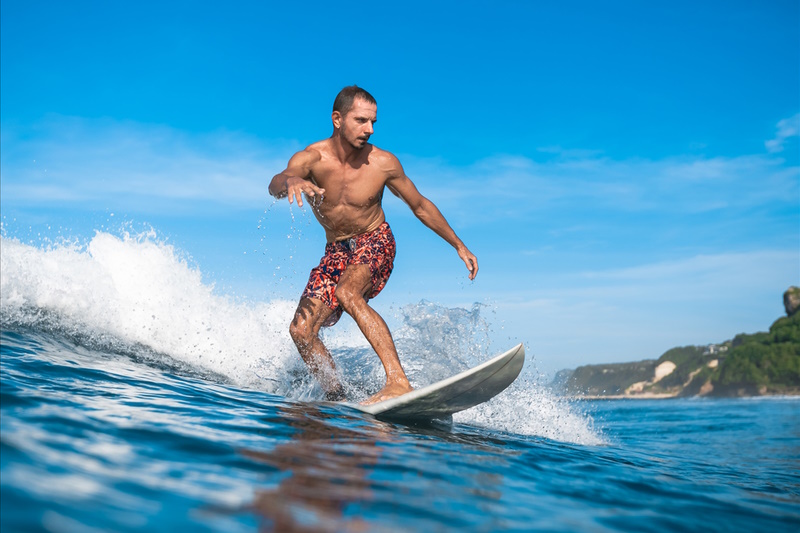
Photo by Depositphotos
-
Beach Volleyball:
Beach volleyball is a fast-paced sport that can provide photographers with plenty of opportunities to capture action shots. To freeze the motion of the players, use a fast shutter speed and continuous shooting mode. To add some visual interest, try shooting from different angles, such as a low angle to capture the players jumping or a high angle to show the entire court. Consider using a telephoto lens to isolate the players and blur out the background.

Photo by Depositphotos
-
Kiteboarding:
Kiteboarding is a challenging and thrilling sport that can provide photographers with plenty of opportunities for capturing action shots. To capture a kiteboarder in motion, use a fast shutter speed and continuous shooting mode. A telephoto lens can help you get closer to the action and capture the details of the kite and the board. To add some drama and interest to your images, try shooting from a low angle or using a wide-angle lens to capture the surroundings.
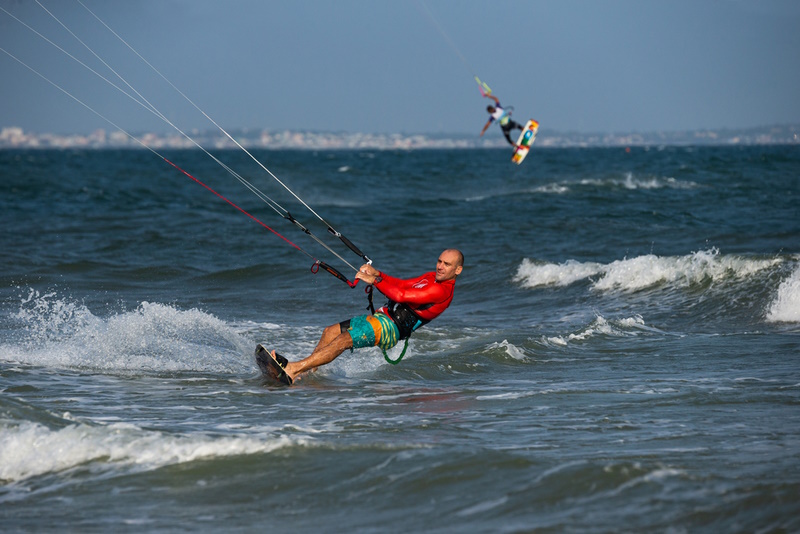
Photo by Depositphotos
-
Other Beach Activities:
There are many other beach activities that can provide photographers with opportunities for capturing action shots, such as beach soccer, frisbee, and paddleboarding. To capture these activities, use a fast shutter speed and continuous shooting mode to freeze the motion. Try shooting from different angles and perspectives to add some visual interest to your images.
In conclusion, capturing action shots at the beach can be an exciting and challenging experience for photographers. By using a fast shutter speed, continuous shooting mode, and experimenting with different angles and perspectives, you can capture stunning images of surfers, volleyball players, kiteboarders, and other beach activities.

-
Post-Processing for Beach Photography
Post-processing plays a vital role in enhancing beach photos by correcting color issues, enhancing contrast and details, removing distractions, and adding creative effects.
Beach photos can sometimes appear dull or washed out, and post-processing can bring out their full potential by adjusting exposure, contrast, and saturation levels.
Detail enhancement can make the image more tactile and realistic while removing distractions can make the photo cleaner and more aesthetically pleasing.
Creative effects such as black and white conversion, sepia toning, or vignetting can give the image a more unique and artistic look.
By utilizing post-processing techniques, photographers can turn their beach photos into stunning works of art that capture the beauty and serenity of the seaside environment.
If you are looking for editing resources like actions, overlays, and textures, I highly recommend paying a visit to my store, it has amazing professional photo editing tools.
In addition, you can check my editing tutorials, and my YouTube channel there are many tips and tutorials there.
Thanks for reading, I hope you enjoyed the article, in case you have any questions just drop them below & I will be happy to answer you.
If you enjoy the site, don’t forget to subscribe, we will only inform you when a new article is posted.

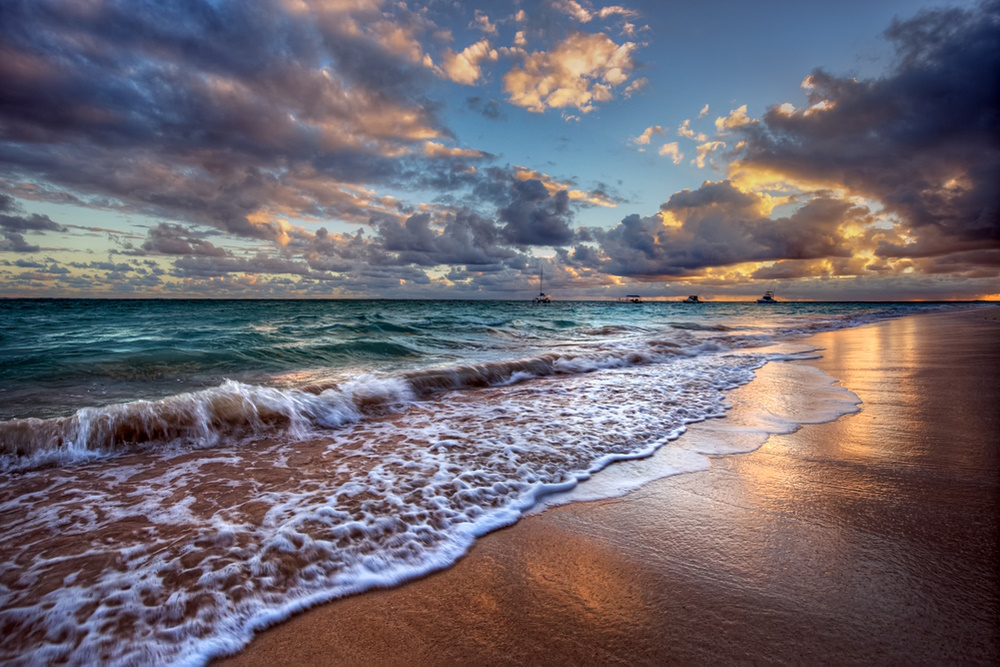



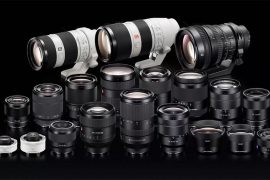



This informative beach photography guide covers essential equipment, camera settings, creative ideas, and gear protection tips, making it a valuable resource for photographers of all levels. Happy shooting!
Nowadays that everyone has a smartphone with a camera we believe we can make nice photos with a click of a button. But amateur to professional looking photos are a mile apart and your article shows very clearly that if you really want to make professional looking photographs it needs more than a simple phone to achieve it and I don not mean only in terms of equipment. There are so many small details that can change the look of a photo that it’s really an art in itself.
Thank you for your comment! You are absolutely right that taking professional-looking photos requires more than just a click of a button on a smartphone camera. While smartphones have certainly made photography more accessible and convenient for everyone, there are still many aspects of the craft that require knowledge, skill, and creativity. It’s important to understand the technical aspects of photography such as lighting, composition, and exposure, as well as the artistic elements that make a photo visually compelling. With practice and attention to detail, anyone can improve their photography skills and create photos that are both beautiful and meaningful.
Thanks for your post.
I wasn’t aware of filters as a great idea to add effect and slow down your shutter speeds.
I also really liked your camera protective ideas; these are simple yet practical and easy to implement.
Those slow shutter speeds images are stunning. I always wondered how this effect was captured. Silhouettes and reflection images of the beach are also brilliant. You provide some great tips for these which I really appreciate.
In fact, looking at the wonderful amount of detail you have provided, you cover virtually everything we would need to know to take great beach photos. Thank you for the time and effort you have poured into this post. Well done
Thank you for your kind words and positive feedback on my post! I’m glad to hear that you found the information on filters and camera protection helpful and that you appreciated the tips on capturing slow shutter speed images, silhouettes, and reflections.
Beach photography can be a fun and rewarding experience, and I’m happy to have been able to provide a comprehensive guide on how to take great beach photos. It means a lot to me that you found the post to be detailed and informative.
Thank you for taking the time to read and comment on my post, and I hope that the tips and techniques I shared will help you take some stunning beach photos in the future!